Having a lush and vibrant lawn is a common aspiration, yet the path to achieving it can be as complicated as the twists and turns of the grass.
Among so many grass varieties to choose from, centipede grass is a top choice for lots of homeowners because of its vibrant green color and low maintenance. However, if you are considering sowing centipede grass seeds in your yard, there’s a significant hurdle to overcome: these grass seeds come with a hefty price tag!
Today, in this article, we will discuss in detail why centipede grass seed is so expensive.
So, without wasting any time, let’s dash ahead!
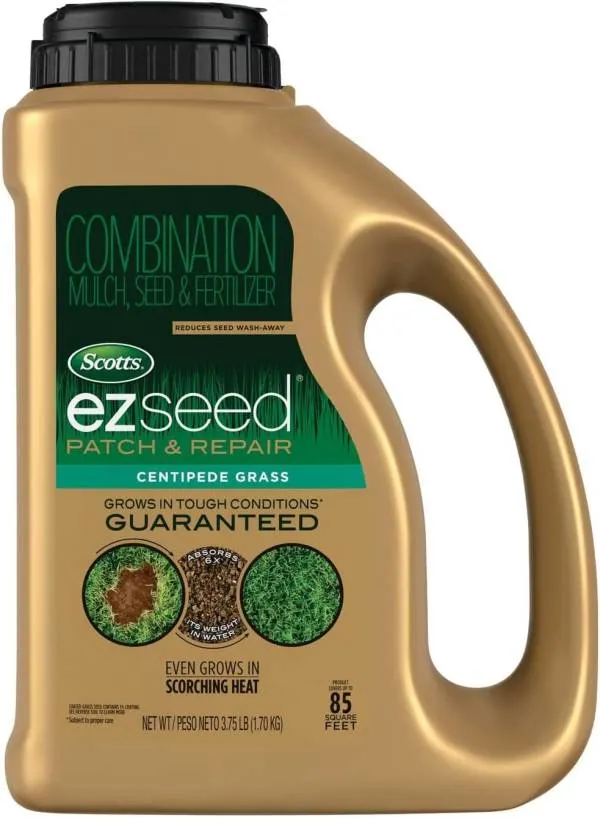
What is Centipede Grass? | A Bird’s Eye View!
Centipede grass, scientifically known as Eremochloa ophiuroides, belongs to the Poaceae family.
It is a popular warm-season turf grass used for lawns, especially in the Southeastern United States. Known for its fine texture and vibrant green color, centipede grass creates a dense, cushiony carpet that is delightful to walk on.
Consequently, centipede grass is highly prized for its aesthetic qualities.
Why Is Centipede Grass Seed So Expensive? | The Reasons!
Centipede grass seed, while highly valued for its low-maintenance qualities and attractive appearance, tends to be more expensive than other grass seed varieties.
The high cost of centipede grass seed can be attributed to a combination of factors.
Let’s discuss all of them in detail.
1. Labor Costs and Machinery Involved in the Production of Centipede Grass Seeds
Labor is a significant expense in centipede grass seed production.
Skilled labor is essential to ensure that each and every grass seed is handled correctly and that the plants are well cared for throughout the growth cycle.
As a result, the wages and benefits of the workforce contribute significantly to the overall cost, making the centipede grass seed so expensive.
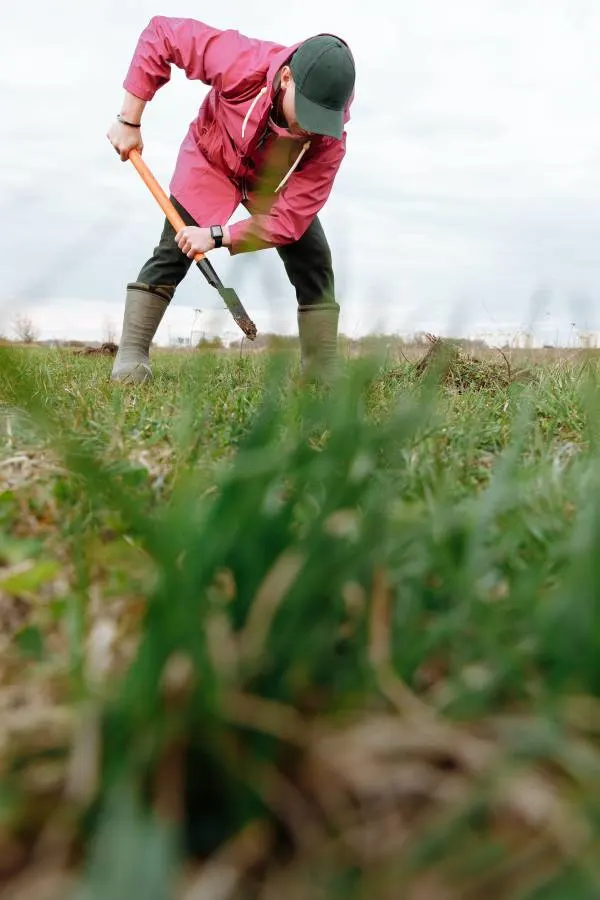
Apart from the labor, pure grass seed production involves the use of various equipment and machinery, which adds to the expenses.
This equipment and machinery includes:
Tractors for field preparation
Planting machines
Irrigation systems
Harvesting equipment
Additionally, seed cleaning and packaging machinery are necessary to ensure the final product’s quality and purity.
Maintenance, repair, and occasional upgrades of this equipment are ongoing expenses.
The cost of investing in, operating, and maintaining these tools plays a vital role in determining the overall cost of centipede grass seed production.
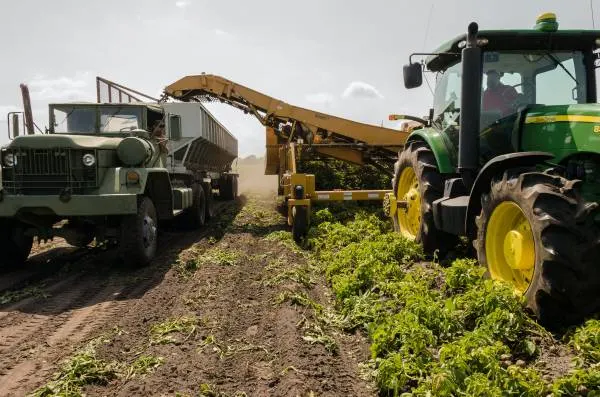
2. Fertilizers and Pesticides Used for Healthy Centipede Grass Seed Growth
As mentioned earlier, to ensure the health and vitality of centipede grass, fertilizers, and pesticides are often required.
Fertilizers provide essential nutrients for the soil, promoting healthy plant growth. Pesticides are used to control pests and diseases that can damage grass plants and reduce the yield.
The cost of these inputs and ongoing monitoring and application is a significant expense in the grass seed production process.
Additionally, there is a growing emphasis on eco-friendly and sustainable practices, which may lead to increased investments in organic fertilizers and reduced pesticide usage, impacting the overall production costs.
3. Supply and Demand for Centipede Grass Seeds
The cost of centipede grass seed is also influenced by the balance of supply and demand.
When the demand to buy centipede grass seeds is high, the price tends to go up.
This can happen for a few reasons:
First, centipede grass is a popular choice for lawns, so many people want the seeds.
Second, the process of producing these seeds takes time, so there may be limitations on how much is available at any given time (which results in diminished supply).
Lastly, seasonal variations can affect supply and demand. In the spring, when people are getting ready to plant their lawns, demand might be higher, and that can drive up prices.
Understanding these dynamics can help explain why centipede grass seeds may seem more expensive during certain times or in specific regions.
Different Types of Centipede Grass
There are several types or varieties of centipede grass, each with unique characteristics and adaptability.
Some are developed to improve the plant’s cold hardiness, but other varieties also tolerate different soil types.
Here are the most common types:
Common Centipede Grass
Common centipede grass is a popular and low-maintenance variety of grass. With its adaptability to various soil types, it serves as an ideal choice for those seeking an easy-to-care-for lawn.
This particular variety of centipede grass is valued for its delightful medium-green shade and soft texture. Noteworthy is its slow growth, reducing the frequency of mowing compared to other centipede grass grows slowly and varieties.
As a result, it becomes a preferred option for people who want a beautiful centipede lawn without investing too much time and effort in maintenance.
While common centipede grass can withstand drought conditions remarkably well, it might not fare as well in cold temperatures.
Hence, it is essential to keep this in account while considering it for your new lawn front.
TifBlair Centipede Grass
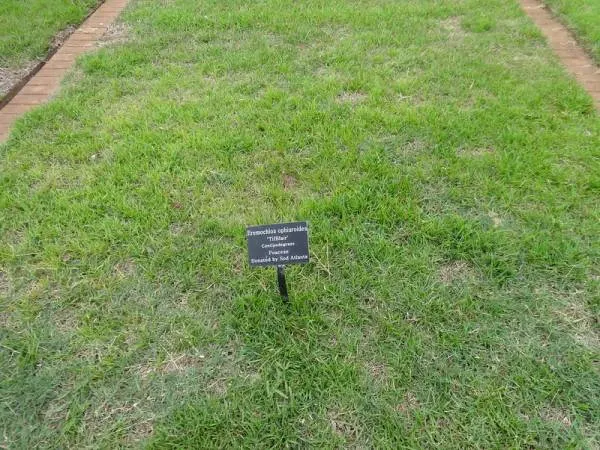
TifBlair centipede grass seed is one of the few improved varieties of centipede grass to be widely grown from seed.
In comparison to the common variety, the TifBlair centipede variety has a deep root system that enhances its resistance to cold and drought conditions. This exceptional feature makes this variety retain its color well during autumn when most warm-season grasses begin to develop brown patches.
Isn’t that awesome?
This variety also requires less mowing, so you won’t have to spend much time in your yard maintenance.
Other Common Grass Varieties and Their Cost Differences with Centipede Grass!
Centipede grass is just one of several grass varieties used for lawns and landscapes.
To decide if it’s the right choice for your needs, it’s helpful to compare it to other popular options like Bermuda grass, St. Augustine grass, and Zoysia grass.
Let’s compare all of them briefly:
Bermuda Grass
Bermuda grass (Cynodon dactylon) stands out as a warm-season grass known for its remarkable drought tolerance, which makes it an ideal choice for regions with hot, dry climates.
This variety exhibits the remarkable ability to withstand extended periods of limited rainfall while maintaining its lush green appearance.
Notably, Bermuda grass is often preferred for its durability and ability to recover quickly from wear and tear, making it a popular option for lawns, sports fields, and golf courses.
While its rapid growth is a notable advantage, it also comes with a slight drawback – the requirement for more frequent mowing compared to other grass varieties.
Characterized by a fine to medium texture, Bermuda grass possesses blades that can display a range of green shades, ranging from light green to deep green, depending on the specific variety.
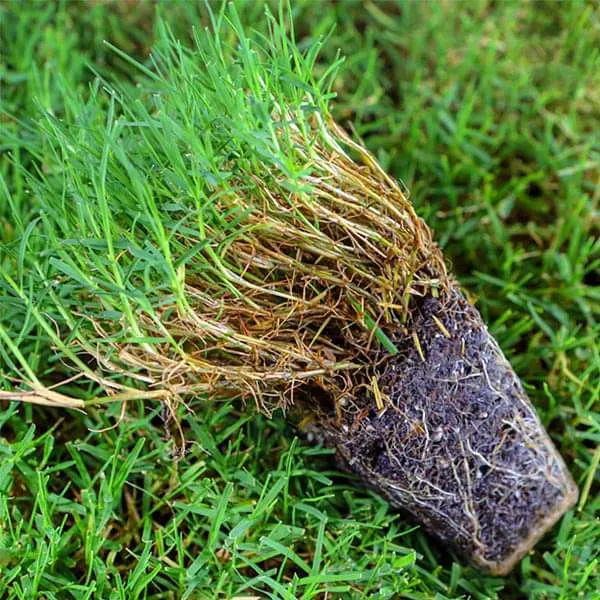
Bermuda grass seed can be competitively priced with centipede, primarily because Bermuda grass grows quickly and covers an area with less seed.
Its lower seed requirements contribute to its affordability.
Zoysia Grass
Zoysia grass (Zoysia spp.) is a warm-season grass variety that’s prized for its low maintenance requirements and ability to resist pests.
This grass species forms a dense and resistant lawn, making it a popular choice for both residential and commercial landscapes.
What sets Zoysia grass apart is its fine to medium texture, creating a pleasantly soft surface to walk on. However, its standout quality lies in exceptional shade tolerance, making it an ideal option for lawns with tree cover or buildings that cast shadows.
This adaptability to less sunlight is truly a remarkable characteristic.
Furthermore, Zoyasia grass is known for its efficiency in water and fertilizer consumption compared to some other varieties existing grass, making it environmentally friendly and cost-effective.
While Zoysia grass may have a slower initial establishment, the long-term advantages of Zoysia grass are undeniable.
Zoysia grass seed pricing varies but is generally in line with Bermuda grass in terms of cost. Zoysia grass is known for its slow growth and drought resistance, which may affect the initial seed cost.
As with other grass types, long-term care costs should be factored into the overall budget.
St. Augustine Grass
St. Augustine grass (Stenotaphrum secundatum) is a warm-season grass that truly shines in tropical and subtropical climates. Its distinctive lush dark green appearance gives the lawns a luxurious, carpet-like quality.
This grass is well-suited for those seeking a dense and visually appealing lawn. Its broad, flat blades and coarse texture come together to create a lavish and inviting surface.
St. Augustine grass flourishes in areas with high humidity and regular rainfall.
However, it may not tolerate drought or cold conditions, which makes it most suitable for specific geographic regions where drought and cold challenges can easily be overcome.
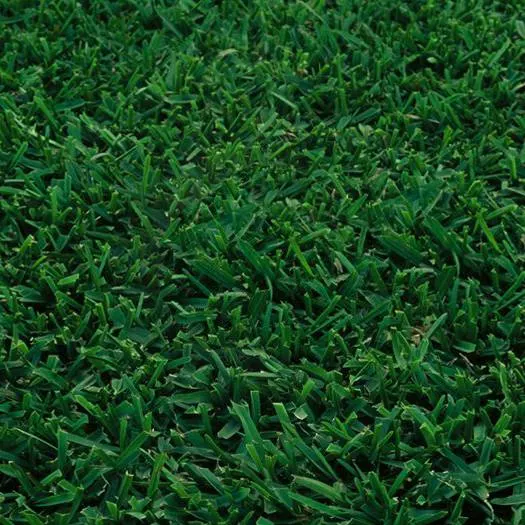
It’s important to note that St. Augustine grass is typically not established; grass grow from seed.
Instead, it is commonly established through sod or plugs, which can be more expensive than purchasing grass seed.
NOTE: When choosing a grass type for your lawn, it’s crucial to consider not only the initial seed cost of growing grass, but also the ongoing maintenance and care expenses.
Additionally, local factors, such as climate, soil type, and availability, can influence the cost and suitability of different grass types for your specific circumstances.
Considerations for Choosing the Right Grass for Your Lawn
Selecting the perfect grass for your lawn is a decision that can greatly impact the appearance, health, and maintenance of your outdoor space.
To make the right choice, you should take into account several key considerations.
These include:
Local Climate
Consider the local climate when selecting a grass variety for your lawn.
Different types of grass thrive in specific weather conditions.
For instance:
Centipede grass is an excellent choice for warm, Southern climates where temperatures are higher for most of the year. It’s adapted to withstand the heat and doesn’t do well in colder regions, except that of the improved varieties.
On the other hand, cool-season grasses like Kentucky bluegrass are better suited for areas with colder winters, as they can endure freezing temperatures.
So, understanding your local climate and choosing a grass type that matches it will help your lawn flourish.
Maintenance Preferences
Think about how much time and effort you’re willing to dedicate to lawn care.
Some grass varieties are low-maintenance, like centipede grass, which grows slowly and requires less mowing. Others, such as Bermuda grass or Zoysia grass, may grow faster and need more frequent mowing.
Additionally, certain grasses may demand more attention in terms of watering, fertilizing, and pest control.
Your maintenance preferences should align with your available time and willingness to invest in keeping your lawn looking its best.
Aesthetic Preferences
Consider your desired lawn appearance when choosing a grass for your lawn. Different grasses come in various shades of green and textures.
For example:
Centipede grass offers a medium green color and has a fine texture.
St. Augustine grass presents a lush, carpet-like look with vibrant green blades, and Kentucky bluegrass gives a darker green hue with a soft, dense texture.
Your aesthetic preferences, including color, texture, and density, can influence your choice and the overall look of your lawn.
That’s all for today!
Now, it’s time to move toward the conclusion.
Conclusion!
Now you know why the cost of centipede grass seed is high as compared to other grass seeds.
Well, the answer lies in a blend of factors.
Labor costs and fancy machinery, the need for fertilizers and pesticides, supply and demand dynamics – all play their part in boosting the cost.
However, when it comes to choosing the right type of grass for your lawn, remember that centipede grass isn’t the only player in the game. You have other options like Bermuda, Zoysia, and St. Augustine grass, each with its unique qualities and cost considerations.
Finding the perfect grass for your lawn is like picking the right flavor of ice cream – it’s all about what suits your unique preferences and makes your outdoor space shine.
I hope you find this information helpful. If you have any query regarding any grass type or other things related to gardening, don’t hesitate to mention it in the comment section below.
Regards,
Moiz Atiq.
